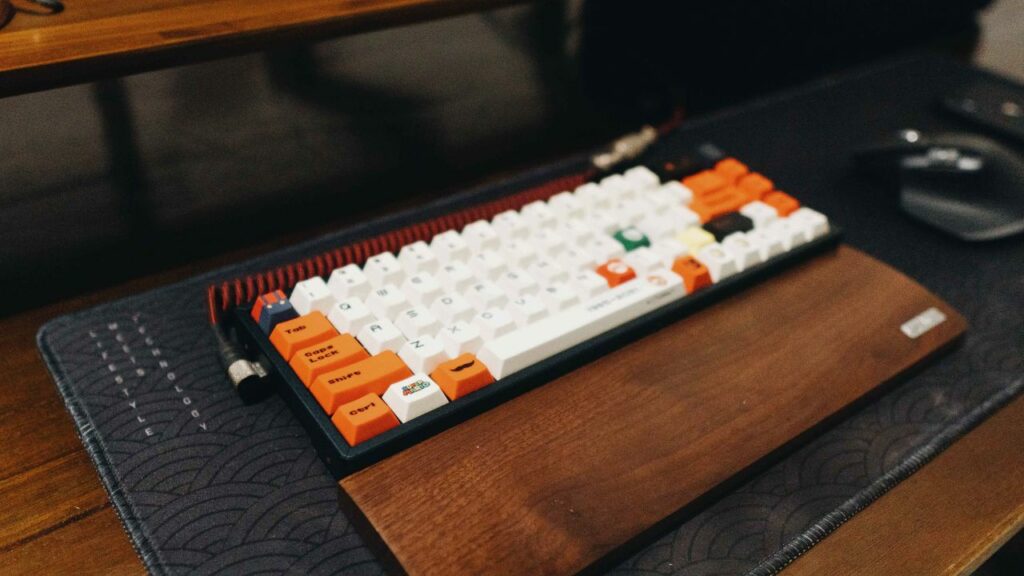
In the realm of mechanical keyboards, size and layout take center stage. Choosing a keyboard size extends beyond aesthetics; it’s a question of functionality, comfort, and personal preference. Among the various options, the 65% keyboard has seen an uptick in popularity. So, what exactly is a 65% keyboard, and why are users worldwide increasingly opting for them?
The Perfect Balance: Small Layout with Essential Modifier Keys
The 65% keyboard layout strikes a harmonious balance between compactness and functionality. Compared to its smaller and larger counterparts, it retains essential modifier keys and arrow keys, making it an optimal choice for users who value both space efficiency and functional versatility.
Comparison of Different Keyboard Layouts
The 60% layout, though compact, often lacks dedicated arrow keys, which many users find essential for navigation. On the other hand, the 75% layout includes more keys, such as the function row, but at the cost of a larger footprint.
Advantages of the 65% Keyboard Layout
The charm of 65% keyboards lies in their ability to offer the best of both worlds. They maintain dedicated modifier keys, ensuring users don’t miss out on important functions. The presence of arrow keys is a significant advantage, simplifying tasks like text editing and gaming.
The Declining Importance of F-Rows and Numpads
It’s becoming more common to view F-row and numpad keys as surplus to requirements. The 65% keyboard, with its compact design and absence of these less frequently used keys, provides an ideal solution for users looking to save desk space without sacrificing essential functionality.
Reasons for Considering F-row and Numpad as Redundant
While some users may still find the F-row and numpad useful, many find these keys rarely used in their daily tasks. The extra space these keys take up can be better utilized, making the 65% layout a more attractive proposition.
The Evolution of Keyboard Trends
Historically, keyboard trends have evolved from 60% to 75%, and now to 65%. This evolution signifies a move towards more compact layouts, with the 65% keyboard layout leading the charge.
Transition from 60% to 75% and Finally to 65%
The transition from 60% to 75% and finally to 65% is a testament to the changing needs and preferences of users. As people started to value space efficiency and portability, smaller keyboard layouts became more attractive. The 65% layout, with its compact design and retention of essential keys, has emerged as the preferred choice for many.
The TKL Alternative: When F-Keys Matter
Despite the growing popularity of 65% keyboards, Tenkeyless (TKL) keyboards still hold a place in the hearts of some users. This is particularly true for those who find themselves using the function keys more often than they anticipated.
Use Cases Where TKL Keyboards are Preferred
Users who frequently utilize software with shortcuts assigned to function keys may prefer TKL keyboards. For such users, the added functionality of having a dedicated function row outweighs the benefits of a smaller layout.
Comparison of TKL and 65% Keyboards
While TKL keyboards offer the full range of function keys, they do come with a larger footprint than 65% keyboards. On the other hand, 65% keyboards strike a balance between compactness and functionality, sacrificing the function row while retaining the dedicated arrow keys and some function keys.
Portability and Space Efficiency: Key Factors in the Popularity of 65% Keyboards
The rise of 65% keyboards can also be attributed to their portability and space-saving characteristics. Smaller layouts are not only easier to transport but also allow for a more spacious desk setup.
Advantages of Smaller Layouts
Portability
With their reduced size, 65% keyboards are easier to carry around. Whether you’re moving between workstations or traveling, a 65% keyboard is a convenient companion.
Desk Space Optimization
A 65% keyboard allows for more desk space, leaving room for other peripherals or simply giving you a more uncluttered workspace.
Ease of Swapping Keyboards with Smaller Layouts
Another advantage of 65% keyboards is the ease of switching them out. Whether you’re a keyboard enthusiast with a collection to showcase or a professional needing to switch between different keyboard configurations, the smaller size of a 65% keyboard makes the process less cumbersome.
Conclusion
The growing popularity of 65% keyboards mirrors the evolving needs and preferences of users. These compact yet feature-rich keyboards hit the sweet spot of portability, space efficiency, and functionality. As more users uncover these benefits, their popularity is set to rise further.
Whether you’re a programmer, writer, or gamer, the 65% keyboard offers a versatile solution that could boost your keyboard productivity and comfort. If you’re considering a keyboard upgrade, why not explore some of the best 65% keyboards available on the market? As the saying goes, sometimes, less is more.
